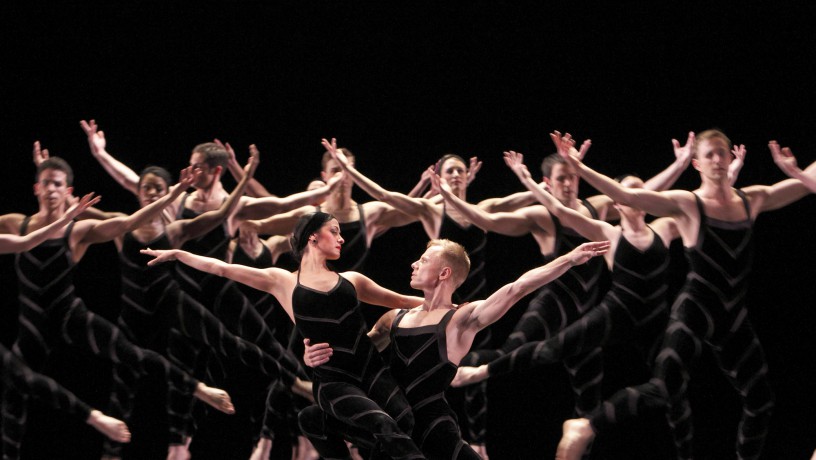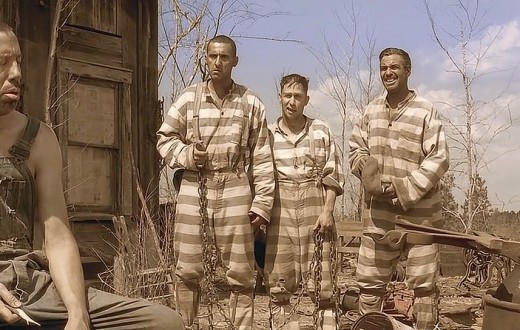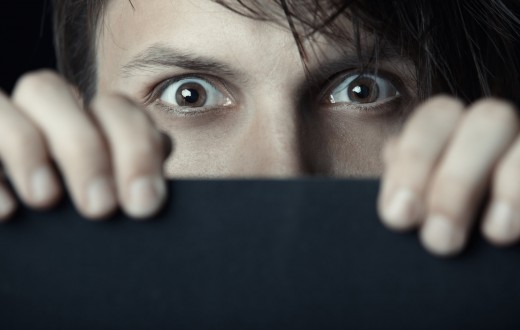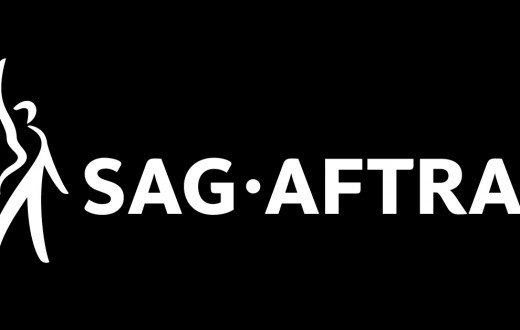Dance Terms Glossary
Ballet
adagio: A music term used for slow, sustained movements. The ‘adagio’ portion of ballet class may encompasses high développés above 90°, or partnering work.
allegro: Rapid tempo movements, often includes jumping steps. Petit allegro includes smaller jumping steps. Grand allegro includes large expansive jumps such as grand jeté.
arabesque: The gesture leg is extended behind the dancer’s body at 90° or higher, which requires hip and spine hyperextension, knee extension, and ankle-foot plantarflexion.
arrière, en: To the back.
assembly: To assemble or place (the feet) together in the air (usually in fifth position) during a jump.
attitude: The hip of the gesture leg is at 90°, the knee is bent, and the foot is pointed. Attitude croisée devant: the leg is lifted to the front. Attitude croisée derriere: the leg is lifted to the back.
avant, en: To the front.
Balanchine: Founder, director, and principle choreographer of New York City Ballet. Trained in the Russian school, he developed a neo-classical technique known for rapid footwork and abstract choreography.
balloon: The quality of lightness, ease in jumping.
ballot: “Tossed”. A light, rocking quality, jump sequence. Ex: A jump from the point tondu front back.
barre: The introductory / warm up portion of the ballet class, conducted while holding onto a ballet bar. The dancer always starts with the left hand at the bar, working the right gesture leg.
beats: To hit the legs together, moving in and out of fifth position in the air. See petite batterie.
Bourrée: A step performed on pointe from fifth position. Initiated with the front foot, there is a rapid weight shift from one foot to the other, performed in place or traveling.
brisé: A jumping beat which allows the dancer to travel in a specified direction.
cabriole: “Caper like a goat”. A jump where one leg is kicked up into the air and the supporting leg pushes off and beats underneath the gesture leg, propelling it higher. The jump lands on the kicking leg.
camber: A bend of the body from the waist to the front, back, or side, with an accompanying port de bras.
Cecchetti Method: A school and style of ballet, originated by Enrico Cecchetti (1850-1928) in Italy. Emphasizes seven basic movements in dance: Plier (to bend), Étendre (to stretch), Relever (to rise), Glisser (to slide or glide), Sauter (to jump), Élancer (to dart), Tourner (to turn). Used by the Italian and Royal (English) Ballets.
center floor: The second portion of the ballet class, comprised of the adagio, turns, and small jumps (petit allegro).
chains: “Linked like a chain”. A series of small turning steps with the feet in first position relevé. Weight is shifted rapidly from one to the other limb with each half turn. Performed continuously in rapid succession.
changement: “Changing the feet”. A vertical jump with a change of feet in the air (from fifth position front to fifth back).
chase: “Chasing one foot with the other”. The leading foot slides forward into fourth (or side-ward into second), then with a spring off the floor, the stance limb draws up to it in the air, and the leading foot opens to land in fourth (or second). Used as a traveling or transition step.
coy-de-pied: A unilateral standing posture with the pointed gesture foot held in front of, back of, or wrapped around the ankle of the stance leg.
coupé: “To cut”. A small intermediary step, used as a link between steps, such as jeté, pas de bourré, etc., using the cou-de- pied position.
croix, en: “Cross”. Unilateral leg gesture carried out in three directions relative to the dancer’s front (en avant), side (a la seconde), and back (en arrière), making the shape of a cross. Typical barre exercises (tondu, dégagé, dévelopé, frappé, grand battement, etc. are performed en croix.
dedans, en: Inward. A circular movement of the gesture limb from the back to the front (as in ronde de jambe), or a turn done toward the stance limb.
dégagé: “To disengage”. Sharp brushes of the pointed foot to develop speed and precision of the feet and legs.
dehors, en: Outward. A circular movement of the gesture limb from front to back, or a turn which moves away from the stance limb.
demi: Half. As in demi-plié.
derrière: Behind.
devant: In front.
dèveloppé: A large, relatively slow leg gesture. The gesture limb begins from first or fifth position, passes through passé, to extend at 90° or higher to the front (en avant), side (a la seconde), or back (en arrière – arabesque).
elevé: A rise upward onto the toes.
échappé: “Escape”. A two-part movement from fifth position out to second (or fourth), and returning to fifth again, either with a jump or en pointe.
envelope: A unilateral leg movement in which the gesture limb begins in a knee extended position away from the body, and ‘folds’ back into the body. (The reverse of a dèveloppé).
épaulement: Position of the shoulders in relation to the head and legs. Sets the head-neck, back, shoulder girdle, and port de bras in a codified relationship.
fifth position: The legs are externally rotated, one foot is crossed in front of the other, with forward toe touching the back heel.
first position: The legs are externally rotated, and heels are together.
fondu: “Melted”. A slow demi-plié of the stance limb, bringing the gesture limb into cou-de-pied, followed by simultaneous extending of both knees to end in dèveloppé (battement fondu dèveloppé) or tondu (battement fondu simple) as specified.
fouetté: A “whipping’ en dehors turn, in relevé, requiring coordinated dèveloppé devant,whipping the gesture leg to second, and returning it to passé, with opening and closing port de bras. The opening and closing action of the gesture leg and arm create spin of the stance limb, allowing it to turn.
fourth position: The legs are externally rotated, one foot is crossed in front of the other, separated by the distance of one foot.
frappé: Beginning from the cou-de-pied position, a rapid striking ricochet (off the floor) of the gesture foot, ending in a pointed position. Develops strength and precision of the gesture limb.
glissade: “Slide or glide”. A linking or preparatory step. The initiating leg slides out into dégagè, weight is transferred to it to allow the other leg to point and slide into fifth. It can be performed slow (adagio) or fast (allegro), but is always smooth and continuous.
grand: Large.
grand battement: A large, swift leg “kick” with the knee extended and foot pointed. Performed to the front, side, or back and from first, fifth, or the point tondu.
grand ronde jambe en lair: A unilateral, circumducted hip action where the gesturing limb describes a semi-circle in space at > 90° of hip flexion.
jets: A “throwing step” where a leaping jump is executed from one foot to the other. The forward leg battements to the front, and the other leg follows in arabesque. (May also be executed to the side).
lair: In the air.
pas: Step.
pas de basque: A traveling step from fifth position plié, which includes one 1/2 ronde de jambe from front to side, weight transfer to this leg, and closure into fifth plié.
pas de bourrée: A basic linking step which permits a change from one fifth position to another.
pas de chat: “Step of the cat”. A jump beginning and ending in fifth position.
passé: Similar in shape to the retiré: the hip is abducted and externally rotated, the knee is bent, the foot is pointed, and the toe touches the knee of the stance limb. However, the passé is a transitional movement as the foot passes on its way to another position (such as dèveloppé).
penuche: Inclined. Usually arabesque penché, in which the torso and gesture limb are tilted forward from the hip. This directs the torso and focus toward the floor.
petite: Small, little.
petite batterie: “Beats”. During a sauté, one calf beats against the other. The number of beats have specific terms: royale (from fifth position, the front leg beats in front and closes back), entrechat quatre (from fifth position, the front leg beats in back and closes front), etc.
piqué: “Pricked”. A step in which the body moves sharply onto the pointe or demi-pointe of the opposite foot. This action can be immediately followed by a turning motion, known as a piqué turn.
pirouette: “Whirl or spin”. A controlled turn on one leg in relevé. The gesture leg may be held in retiré (passé), seconde, attitude, cou-de-pied, etc. The turn may be performed en dedans or en dehors.
plié: A bend of the knees while the torso is held upright. The action relies on varying degrees of hip and knee flexion, with ankle and MTP dorsiflexion, depending on whether the plié is demi- or grand.
pointe, en: On pointe. Position of the foot in a pointe (or toe) shoe, in which the dancer stands on the toes.
port-de-bras: Carriage of the arms. The codified arm positions which provide strength and balance to the trunk, and may also serve as gesture or enhancement of focus.
port-de-corps: Carriage of the body. Basically, port-de-bras action supplemented with flexion, lateral flexion, or hyperextension movement of the spine.
promenade: A slow pivot of the body while standing on one leg.
relive: A rise or spring onto the toes (demi- or full pointe) from plié.
retire: A static position in which the hip of the gesturing leg is externally rotated and abducted, the knee is flexed, and the foot is pointed and touching the knee of the stance limb.
reverence: “Bow”. Traditional port-de-bras and port-de-corps showing respect and gratitude to the ballet master or audience.
ronde de jambe: A unilateral leg action in which the gesture leg is circled from front to back of the dancer’s body, or vice versa. May be performed on the ground (a terre) or in the air (en l’aire).
sauté: A simple jump in the vertical direction.
seconde, la: To the side (second position).
second position: The legs are externally rotated and separated by the distance of one foot, in the frontal plane.
sissonne: A jump from two feet onto one foot in various directions.
soussus: Springing into fifth position relevé en pointe or demi-pointe from demi-plié.
soutane: From demi-plié on the stance leg and pointe tondu with the gesture leg. Rising to demi-pointe while simultaneously drawing the gesture leg into fifth.
tendu: A “stretched” action of the gesturing limb from a stance position with flat foot to a pointed foot, with the toes keeping contact with the floor.
terre, a: On the ground.
third position: The legs are externally rotated, and one heel is placed in front of the other.
tour: Turn of the body.
tour en lair: “Turns in the air”. Sauté which incorporates airborne rotations. Primarily performed by men.
tour jets: A jeté which incorporates an angular rotation of the body and switching of the legs in mid-air.
tourant, en: Turning.
Vaganova Method: A school and style of ballet developed by Agrippina Vaganova (1879-1951) in Russia. Most of the Russian ballet syllabus is based on this style.
Ballroom Dance
cha-cha: The most popular Latin dance composed of quick steps.
fox trot: A dance to a 4/4 tempo.
polka: Originated as an English folk dance, in a 2/4 tempo.
swing: Evolved from the jazz era. There are three types: triple, double, and single, depending on the tempo of the music. Uses a hold similar to the fox trot. Also known as the lindy.
waltz: An elegant smooth dance in a 3/4 tempo, with accent on the first beat.
Modern and Jazz Dance
body roll: A rolling movement through the body.
bridge: Also called a back bend.
chest lift: With back on the floor, chest lifts off the floor.
compass turn: Like an arabesque turn, but the toes stay in contact with the floor.
coccyx balance: Balance on the coccyx, both knees bent with lower legs parallel to ceiling and feet pointed, torso may tilt slightly backward, arms are parallel with lower legs. [Horton technique].
contraction: Tightening the abdominals, tucking the pelvis, and forming a “C” with the torso so that the shoulders are over the pelvis. [Graham technique].
fan kick: A high straight leg kick in which the gesture leg makes a swooping circular arc across the front of the body.
flat back: Position in which the legs are in parallel, the back is kept flat, parallel to the floor, with the torso hinged at the hips. [Horton technique].
flea slide: Slide on a diagonal line in passé.
forced arch: Weightbearing position of the foot in which the heel is lifted and the knee is bent with extreme metatarsal dorsiflexion.
Graham technique: A modern dance technique developed by Martha Graham, based on “contraction and release” as the motivation of all movement. Includes term such as spiral, tilt, and pitch turn. Used in the choreography of Graham, Ailey, and Elisa Monte companies.
isolations: Moving one part of the body, such as the head, shoulder, ribs, or hips, while the rest are immobile.
jazz frame: Arms are crossed overhead with fingers in jazz hands.
jazz hand: Fingers are spread.
hinge: Legs are in parallel, pelvis is pressed diagonally forward, torso tilted diagonally backward, knees are bent and approximately 3” off the floor, heels are raised to 1/4” relevé. [Horton technique].
Horton technique: A modern dance technique which was developed from a balance study by Lester Horton. Includes terms such as flat back, primitive squat, T, table, and stag. Used within the choreography of companies such as Ailey, Philadanco, and Tristler.
Humphrey technique: A modern dance technique based on the concept of “fall and recovery”, developed by Doris Humphrey. A predecessor and mentor to José Limón of Limón technique.
knee hinge: A tilt of the torso in which the knees are bent and at a 45° angle, the back is flat, and the heels are lifted. [Horton technique].
lateral: A side stretch of the torso, with legs in 2nd position. [Horton technique].
Limón technique: A modern dance technique developed by Jose Limón, which built on the concepts of Doris Humphrey and is based on the “fall, recovery, and rebound”. Used within the choreography of Limón, Falco, Muller, and Lubovitch.
lunge: A large, open fourth position in which one knee is bent (usually the front), and the other is straight.
primitive squat: Legs are in parallel, torso is straight, knees are fully bent, with heels remaining on the floor in a squat. [Horton technique].
release: A relaxing or arching movement.
Russian: Also called a toe touch jump in second position.
shimmy: Shoulder shaking: alternating in a rapid motion.
Sixth position: Feet in parallel, and together. (Also known as parallel first).
spiral: Rotation of the torso around the pelvis. [Graham technique].
stag: Leap in which the forward leg is in parallel passé and the backward leg is in attitude turned out. [Horton technique].
“V” Position: Position in which the arms, legs, and body make a “V” shape.
wrist press: Flexing the hand and pushing the palm away from the shoulder.
Tap Dance
ball change: Two quick changes of weight from one ball of the foot to the other.
bells /clicks: Clicking of the heels together while in the air.
break: Two measure movement that follows a six measure movement. A slight change in the normal rhythm of a movement pattern.
brush: Striking of the ball of the foot or the toe tap against the floor. This is usually done in a direction. A backward brush is called a spank.
buck / chug: Forward movement emphasizing the heel drop with weight on the same foot.
buffalo: Step consisting of a step, shuffle, and a leap. forward or sideward
Cincinnati: A brush, hop on the opposite foot, shuffle and a step. This step is performed traveling backwards and alternates feet.
cramp roll: Step using toe and heel drops in a specific pattern.
dig: Digging of the heel into the floor without weight transfer.
draw: Pulling of the free foot from an open to a closed position with a sliding motion.
essence: Basic movement associated with soft shoe dancing.
flap: Brush and step with transfer of weight.
heel / heel drop: Forceful dropping of the heel on the floor, with the weight placed on the ball of the same foot.
hop: Jump into the air, landing on the same foot and keeping the heel lifted.
Irish: Movement adopted from Irish folk dances which consists of a shuffle, hop, and a step. This can be done traveling forwards or backwards.
jump: Spring into the air from both balls of the feet and landing on the same.
leap: A spring into the air, from one foot to the other.
Maxie Ford: Step named for a famous dancer. Consists of a step, shuffle, leap, tap.
nerve roll: Series of quick, consecutive taps with heel, ball, toe, or tips.
off beat: Unaccented beat.
pick-ups/pullbacks: Hop on one foot with a back brush in the air, landing on the same foot. Can be done as singles, doubles, or alternating. Shuffles and taps can also be added.
rhythm: Pulse of the music. Rhythm dance is composed of broken rhythms, syncopation, and off beats.
riff: Movement combining a brush and a scuff on the same foot.
riffle: Riff combined with a spank.
scuff: Forward movement hitting the heel of the foot on the ground.
scuffle: Scuff followed by a spank.
shim-sham: Name of a time step dance.
shuffle: Brush followed by a spank.
slap: Flap without weight transfer.
soft shoe: Type of dance, originally done without shoes.
spank: A backward brush of the ball of the foot.
stamp: Step onto the entire foot with weight transfer.
step: Step onto the ball of the foot without weight transfer.
stomp: Stamp without weight transfer.
syncopation: Accenting the weak part of the beat.
tap: Striking the ball of the foot without weight transfer.
time step: An eight measure movement, used to set the tempo.
toe drop: Dropping the toe with weight on the foot.
toe stand: Movement in which the dancer stand on the tips of the tap shoes: “en pointe”.
toe tip: Striking the tip of the tap shoe against the ground.
triplet: Three sounds, usually a shuffle step.
waltz clog: A dance in 3/4 time.
wings: With weight on one foot, a hop into the air while scraping the edge of the tap shoe on the ground. A brush is then done before landing on the same foot.







